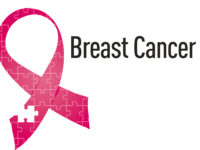Cervical cancer is the fourth most frequent cancer in women with an estimated 570,000 new cases in 2018 representing 6.6% of all female cancers. Approximately 90% of deaths from cervical cancer occurred in low and middle-income countries. This should be a matter of priority for health services in these countries. Do we have a reliable data to provide information on this condition in Ghana? The answer appears not to be in the affirmative.
Countries need health statistics in order to identify why people die or what causes illness. This information enables countries to target their health problems and prioritize the use of precious health resources. The unfortunate fact is that many are living with the condition without knowing it. The cost of screening can be challenging for many growing economies.

Cervical cancer is a cancer arising from the cervix. It is due to the abnormal growth of cells that have the ability to invade or spread to other parts of the body. The early stages of cervical cancer may be completely free of symptoms. Vaginal bleeding, contact bleeding (bleeding after sexual intercourse), or rarely, a vaginal mass may indicate the presence of malignancy. Also, moderate pain during sexual intercourse and vaginal discharge are symptoms of cervical cancer.
Symptoms of advanced cervical cancer may include: loss of appetite, weight loss, fatigue, pelvic pain, back pain, leg pain, swollen legs, heavy vaginal bleeding, bone fractures, and (rarely) leakage of urine or faecal matter from the vagina. Bleeding after douching or after a pelvic exam is a common symptom of cervical cancer.
Infection with some types of HPV (human papillomavirus) is the greatest risk factor for cervical cancer, followed by smoking. HIV infection is also a risk factor. Not all of the causes of cervical cancer are known, however, and several other contributing factors have been implicated.
Human papillomavirus types 16 and 18 are the cause of 75% of cervical cancer cases globally, while 31 and 45 are the causes of another 10%. Women who have sex with men having many other sexual partners or women who have many sexual partners have a greater risk.
Cigarette smoking, both active and passive, increases the risk of cervical cancer. Among HPV-infected women, current and former smokers have roughly two to three times the incidence of invasive cancer. Passive smoking is also associated with increased risk, but to a lesser extent.
Long-term use of oral contraceptives is associated with increased risk of cervical cancer. Women who have used oral contraceptives for 5 to 9 years have about three times the incidence of invasive cancer, and those who used them for 10 years or longer have about four times the risk.
Having many pregnancies is associated with an increased risk of cervical cancer. Among HPV-infected women, those who have had seven or more full-term pregnancies have around four times the risk of cancer compared with women with no pregnancies, and two to three times the risk of women who have had one or two full-term pregnancies.
The Pap test can be used as a screening test. An important concern is the cost of doing pap tests which make it unaffordable in many areas of the world. Confirmation of the diagnosis of cervical cancer or precancer requires a biopsy of the cervix. According to the 2010 European guidelines, the age at which to start screening ranges between 20 and 30 years of age.
The treatment of cervical cancer varies worldwide, largely due to access to surgeons skilled in radical pelvic surgery, and the emergence of fertility-sparing therapy in developed nations. Because cervical cancers are radiosensitive, radiation may be used in all stages where surgical options do not exist. Surgical intervention may have better outcomes than radiological approaches. In addition, chemotherapy can be used to treat cervical cancer, and has been found to be more effective than radiation alone.
WHO is accelerating progress. WHO is working to ensure that all girls globally are vaccinated against HPV and that every woman over 30 is screened and treated for pre-cancerous lesions. To achieve that, innovative technologies and strategies are needed. WHO is working to improve access to diagnosis and treatment of invasive cancers at their earliest stages and ensure that availability of palliative care for women who need it.
All of these services must be embedded in strong health systems aimed at delivering universal health coverage. High-income countries have shown the way. Now is the time for global elimination.
Urgent action is needed to scale up implementation of proven cost-effective measures towards the elimination of cervical cancer as a global public health problem. These actions include vaccination against human papillomavirus, screening and treatment of pre-cancerous lesions, early detection and prompt treatment of early invasive cancers and palliative care. This will require political commitment, greater international cooperation and support for equitable access, including strategies for resource mobilization.
osei.boaitey@yahoo.com
Credit:
World Health Organisation (WHO)




